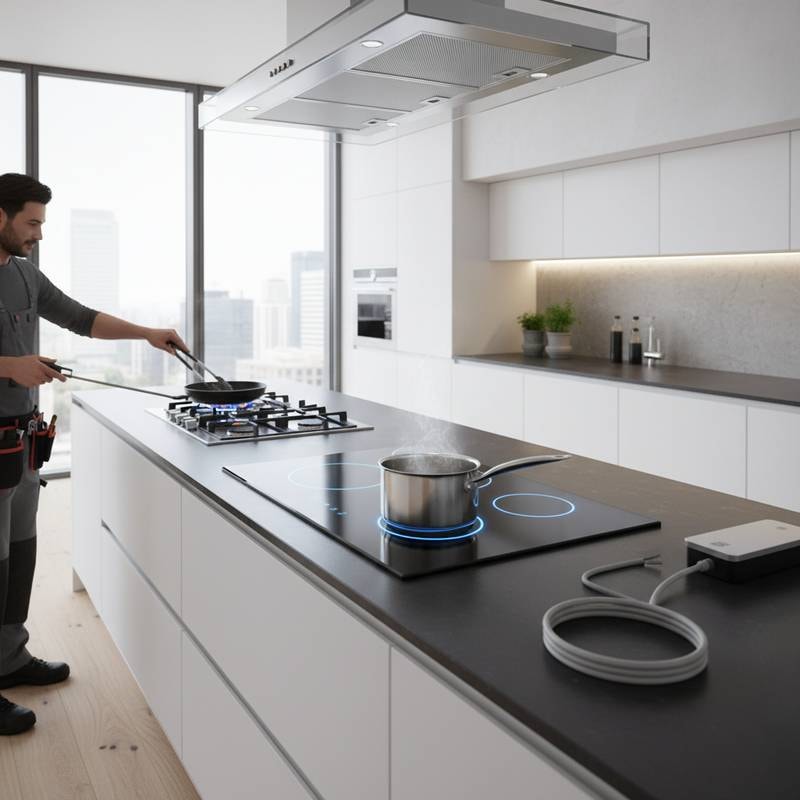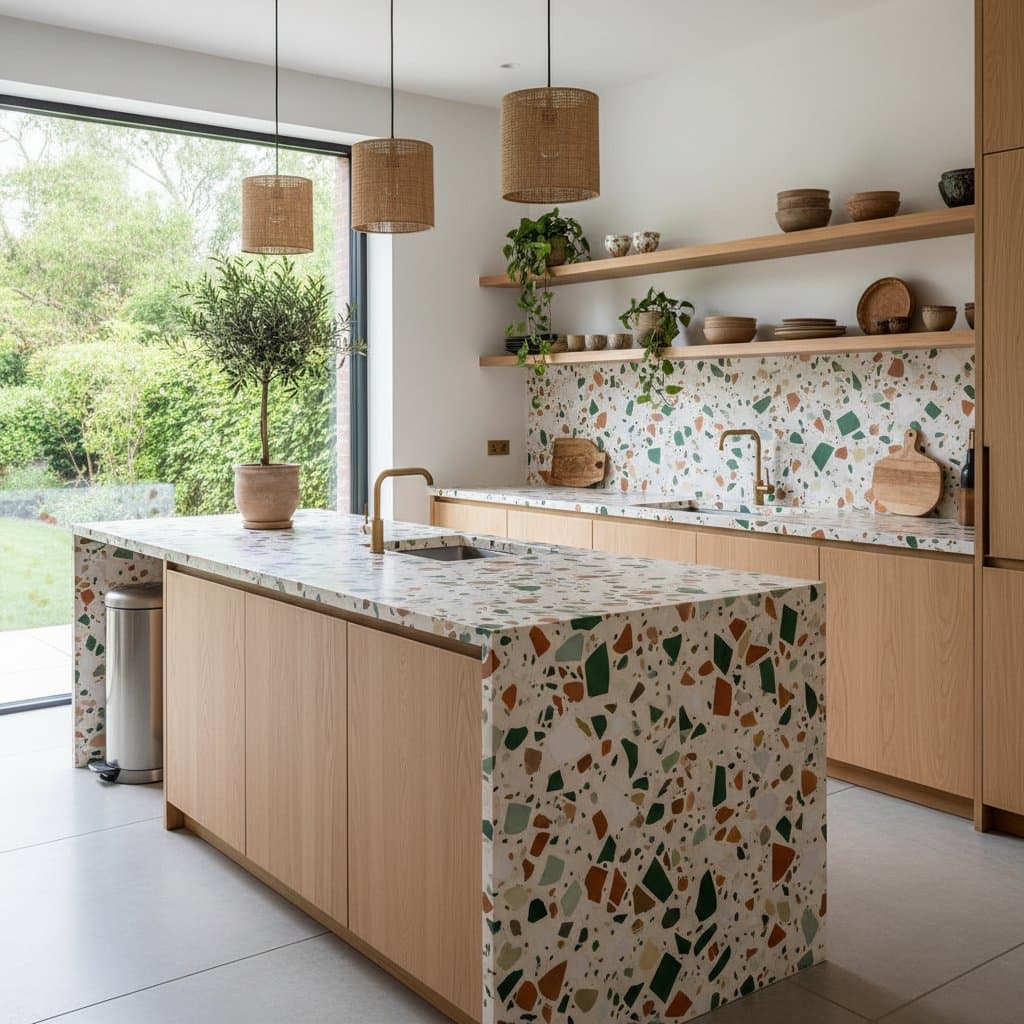Why Induction Cooktops Revolutionize Modern Kitchens
Few kitchen upgrades alter cooking routines as profoundly as the transition to induction technology. Homeowners frequently express initial doubts, concerned about relinquishing the familiar gas flame or assuming electric alternatives deliver sluggish results. However, observing an induction cooktop in operation dispels these reservations. The system provides robust power, exacting precision, and exceptional cleanliness that surpass expectations for an electric surface. For anyone contemplating a kitchen renovation, a deeper understanding of induction technology may reshape those considerations.
Core Principles of Induction Technology
Conventional electric cooktops rely on resistance coils or radiant elements to generate heat. Gas cooktops produce warmth through an exposed flame. Induction operates on a distinct principle: it employs electromagnetic fields to heat cookware directly. The cooktop surface remains comparatively cool, as the pot or pan serves as the primary heat source. This approach achieves superior energy transfer efficiency, resulting in accelerated heating and enhanced temperature management.
During installations, professionals emphasize that induction represents more than a standard electric appliance. It functions as a responsive instrument that adjusts instantaneously. Reducing the setting causes the temperature to plummet without delay. Increasing it brings water to a rapid boil. Such immediacy, once exclusive to gas, now defines induction's superiority.
Enhanced Safety Measures for Household Protection
Safety emerges as a key discussion point in any kitchen project. Gas infrastructure, visible flames, and residual burner heat introduce notable risks. Induction mitigates these issues substantially. The surface heats only through proximity to compatible cookware, cooling swiftly upon removal of the vessel. This feature minimizes scalding dangers, particularly in households with young children or elderly members.
An additional safety advantage involves indoor air quality. Gas cooking emits nitrogen dioxide and carbon monoxide, compounds that accumulate in poorly ventilated spaces and pose long-term health risks. Induction generates no combustion byproducts, maintaining a purer and healthier kitchen environment. Contractors view this as a significant advancement in residential design.
Superior Energy Efficiency and Cost Savings
Induction directs energy straight to the cookware, minimizing dissipation. A gas flame squanders much of its output into the ambient air. Traditional electric elements perform marginally better yet still lose considerable heat. Induction converts the majority of electrical input into effective cooking energy. Consequently, users experience reduced utility expenses and a more temperate kitchen atmosphere.
Homeowners also appreciate the time efficiencies. Rapid heating shortens overall cooking durations. For instance, boiling water requires half the time compared to gas methods. These gains extend beyond electricity savings, allowing more leisure after meals. Across the lifespan of a kitchen, such efficiencies accumulate into substantial benefits.
Effortless Maintenance and Cleaning Routines
Homeowners familiar with scouring gas grates or tackling residue on coil burners understand the tedium involved. Induction features a seamless glass surface. Because the cooktop itself heats minimally, spills seldom adhere stubbornly. Most cleanups require only a damp cloth passed over the area.
One client shared that her former gas cooktop demanded nearly an hour of weekly scrubbing. With induction, the task now takes five minutes. This ease transforms attitudes toward kitchen duties, keeping the space welcoming and operational with minimal effort.
Versatile Design Integration for Contemporary Spaces
Induction models offer diverse dimensions and setups, from portable single-burner units to integrated surfaces that harmonize with quartz or granite countertops. Absent the need for combustion venting, installation possibilities broaden. Professionals have fitted these cooktops into central islands, beneath windows, and within tight studio apartments prohibited from gas connections.
The level glass expanse contributes to a sleek, contemporary aesthetic. In comprehensive remodels, it complements minimalist designs and modern materials. The unit integrates unobtrusively into the countertop until activated for use.
Installation Considerations and Best Practices
Converting from gas to induction demands careful preparation. These cooktops necessitate a dedicated electrical circuit, typically rated at 40 amps or higher. Engage a certified electrician to assess whether the home's electrical panel supports the demand. In older properties, updates to wiring or circuit breakers might prove essential. The process remains straightforward when executed by qualified experts.
Before proceeding, evaluate cookware compatibility. Induction activates only with ferromagnetic materials, such as cast iron or specific stainless steel alloys. Non-magnetic options like aluminum or copper require a ferrous base layer to function. Many households retain portions of their collections; a simple test involves adhering a magnet to the pan base. If it holds securely, the item suits induction use.
Addressing Persistent Myths
Skeptics often regard induction as delicate or inconsistent. Current models prove robust and meticulously constructed. The glass withstands impacts and thermal stress through specialized tempering. While brand quality varies, premium selections endure for years with routine care. Advanced units incorporate features like automatic pan recognition and safety shutoffs.
A further myth posits that induction forfeits the tactile feedback of gas. In practice, discerning chefs favor its command. The exactitude facilitates nuanced preparations, uniform browning, and repeatable outcomes. Adaptation leads most users to forgo reversion to older methods.
Broader Environmental and Sustainability Advantages
Induction extends beyond daily utility to foster eco-friendly practices. As residences shift toward all-electric infrastructures, eliminating gas dependencies aligns with progressive trends. This choice streamlines subsequent modifications and circumvents issues like leaks or exhaust requirements. From a market standpoint, prospective buyers prioritize energy-efficient, low-upkeep, and wellness-oriented attributes. Induction fulfills these criteria comprehensively.
For long-range planning, the design's simplicity reduces upkeep needs. Absent gas valves, pilot lights, or ignition systems, mechanical failures diminish. This dependability yields fewer interventions and diminished expenses throughout the appliance's service life.
Realizing the Full Potential of Your Kitchen Upgrade
Induction cooktops stand as a premier enhancement for evolving kitchens. They merge superior functionality, protective features, and operational thriftiness, enriching routine activities and preserving enduring worth.









